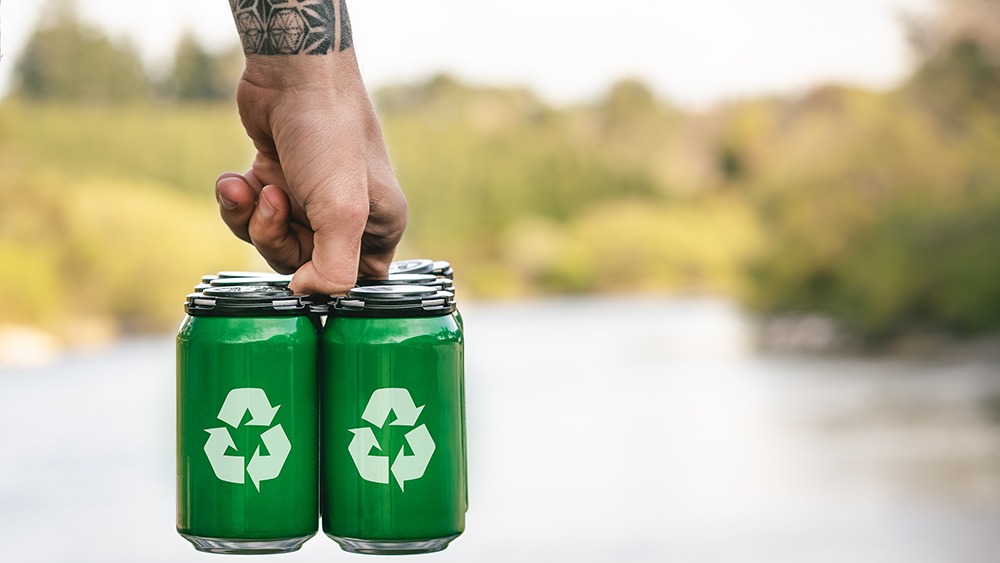By Indiana Lee, Contributor
Adding a popular drinks menu to your current offering is a great way to improve your profitability and pad your margins. A well-tailored alcohol menu can help you attract a different kind of consumer and may help you claw back some of the costs associated with pandemic-era inflation rates.
However, if you want to appeal to a modern, culturally sensitive consumer, you’ll need to do more than offer the same range of stouts, wines, and spirits that folks can find on any street corner.
Instead, differentiate yourself from the market and win the favor of climate-conscious customers by offering a more sustainable range. Switching to sustainable drinks can also help you connect with local stakeholders, as buying from micro-breweries and local vineyards can lower transport-related carbon costs due to the supplier’s proximity to your restaurant.
Sustainable Alcohol as a Competitive Advantage
More bars and restaurants are embracing sustainable booze to connect with customers who are willing to spend a little more in order to protect the planet. Sustainable alcohol options could become even more appealing in the coming years as America’s economy bounces back from the pandemic and more people become aware of the looming climate crisis.
In fact, research completed by International Bulk Wine and Spirits in 2022 demonstrated that 76% of wine professionals believed that the demand for sustainable wine was increasing. And 60% of customers stated that they prioritized sustainability in their purchasing choices. If you fill this niche in your neighborhood, you’re likely to attract guests that other restaurants won’t.
Additional research also demonstrates that younger clientele are particularly interested in sustainable options. Many generations are also willing to pay anywhere from 10% to 20% more for their food and drink if it was offered at a restaurant that champions sustainability. So not only is sustainable alcohol a great way to attract more customers, it could also result in higher profits.
Low Waste Wines
Vineyards and wineries around the world are pivoting towards more sustainable solutions. Today, you can tap into a large market for sustainable reds, whites, and rosé that suit your clientele’s palette and budget. Modern wineries like the Fetzer Vineyards in California have been net-zero since 2016 and employ a series of methods, including:
Installing on-site solar panels that produce 1 million kWh of renewable energy per year;
Diverting of 99.2% of solid waste via recycling, composting, and repurposing;
Purchasing carbon credits for unavoidable emissions.
These steps contribute to achieving a net-zero and zero-waste status. When searching for low-waste vineyards in your area, look for certification from a wine industry sustainability body. Be sure to do your research when you do find prospective vineyards and vintages, as you’ll need to ensure that your supplier isn’t greenwashing in order to protect your brand image.
Reducing Waste
Sustainability is about more than cutting down carbon emissions and buying from net-zero suppliers. You’ll also need to take a proactive approach to reducing your own waste if you want to pitch yourself as a sustainable, climate-conscious option for your customers. Failing to clean up your own act will result in pushback from your guests and may undermine your brand. You can start taking steps to reduce commercial waste by:
Waste Audits: Regular audits will track your waste and help you identify potential areas for improvement. Audits ensure that the waste you produce ends up in the right recycling bins and is being repurposed whenever possible.
Eliminate Single-Use: Plastic straws and throwaway cups produce an unfathomable amount of waste. Invest in more sustainable, reusable options and eliminate items like plastic bags when serving up takeaways.
Strategize: Your waste management program probably isn’t perfect—and that’s ok. Start strategizing areas for improvement, like inventory management, and communicate your plans clearly with the whole team.
Partnerships: Team up with local breweries and low-waste producers to clean up your act. They may even be able to suggest improvements to your operations that you had previously overlooked.
These steps will reduce your waste and help you run a more eco-friendly business. This is crucial if you want to start selling sustainable alcohol and brand yourself as environmentally conscious. Taking waste management seriously can help you connect with sustainable stakeholders in the area. This can be transformative if you haven’t previously considered the impact that your beverage sales might have on the local ecosystem.
Supporting Local Breweries
One of the easiest ways to cut down your carbon footprint is to buy locally. Many climate-conscious consumers will want to order local beers, wines, and spirits as they care about supporting their community. If you do decide to buy from a local microbrewery, be sure to list the location of the beer clearly on the menu. This will incentivize folks to buy more local beer and will help support your efforts to buy booze with minimal transport-related carbon costs.
If you can’t locate any craft beer producers in your area, consider opting for eco-friendly breweries like:
Full Sail Brewing, Oregon
New Belgium Brewing Co., Colorado
The Alaskan Brewing Co., Alaska
Harpoon Brewery, Massachusetts
Options like New Belgium Brewing are easily recognizable and will catch the attention of climate-conscious diners. This can lead to a jump in sales, as many folks prefer to order an alcoholic beverage that they know they will enjoy when eating out.
Conclusion
Sustainable alcohol options can pad your profit margin and lead to higher sales. They are a great way to upsell as many climate-conscious folks will pay more for eco-friendly brews. Just be sure to do your research first, as you can’t afford to buy from a supplier that is using underhand greenwashing tactics rather than making real operational changes to combat climate change.














